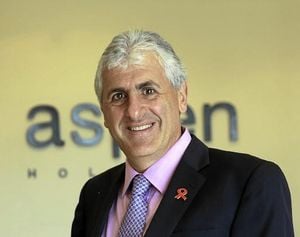Eli Lilly and Company has been navigating a tumultuous financial landscape, with its shares recently falling 8.2% due to market uncertainty and the exclusion of its weight-loss drugs from Medicare coverage. However, a promising announcement regarding its new oral weight-loss medication, orforglipron, has reignited investor interest, leading to an 11% surge in premarket trading.
In 2024, Eli Lilly's tirzepatide-based drugs, Mounjaro and Zepbound, generated an impressive $16.5 billion in sales, accounting for approximately 36% of the company's total revenue. These medications have quickly become flagships for Lilly, but their growth has faced challenges. Concerns over supply constraints and the sustainability of demand have emerged, particularly as the company prepares for new product launches in international markets.
Despite these challenges, Lilly remains optimistic about its future. The company has committed over $50 billion since 2020 to expand its manufacturing capacity across the United States and Europe. This investment is expected to alleviate supply issues for Mounjaro and Zepbound, which should help stabilize their market performance. Moreover, the FDA's recent approval of Zepbound for treating moderate-to-severe obstructive sleep apnea in adults with obesity is anticipated to further boost sales.
In a significant development, orforglipron, Lilly's latest oral weight-loss pill, has shown promising results in late-stage trials. The highest dose of the medication resulted in a weight reduction of nearly 8% among participants, along with improved blood sugar levels in patients with type 2 diabetes. This news has sparked excitement among investors, pushing Eli Lilly's stock price to $817.00, reflecting an $82.10 increase in premarket trading.
Orforglipron's appeal lies in its administration method; unlike injectable treatments, this new drug can be taken orally, which may attract a broader range of patients. Lilly's CEO, David Ricks, expressed confidence in the drug's potential, stating, "If approved, orforglipron could help more patients access the treatments and alleviate the supply shortfalls of the popular injections on the market." The company plans to submit a regulatory approval request for orforglipron by the end of the year.
As the obesity treatment market heats up, analysts predict it could reach $200 billion by 2031. Eli Lilly is not alone in this race, as competitors like Amgen and Viking Therapeutics are also developing their own GLP-1-based treatments. Amgen is set to begin Phase III studies for its dual GIPR/GLP-1 receptor agonist, MariTide, while Viking Therapeutics is advancing its VK2735 candidate in both oral and injectable forms.
Despite the competitive landscape, Eli Lilly has managed to outperform the broader pharmaceutical market, which has seen a decline of 4.1% this year. The company has maintained a robust revenue outlook, projecting earnings between $58.0 billion and $61.0 billion in 2025, representing a 32% increase year-over-year. Additionally, Lilly has returned $3 billion to shareholders through share repurchases and dividends in 2024, and its board of directors recently approved a new $15 billion stock buyback plan.
Wall Street's confidence in Eli Lilly's future is reflected in the average target price set by analysts, which stands at $1,014.97, with estimates ranging from $800.00 to $1,190.00. This suggests a potential upside of 38.11% from the current stock price. Moreover, the company's average brokerage recommendation is currently rated at 1.9, indicating an "Outperform" status.
In summary, Eli Lilly's strategic investments in expanding its manufacturing capabilities, coupled with the promising results of its new oral weight-loss medication, position the company favorably in a competitive market. While challenges persist, including regulatory hurdles and evolving market dynamics, the outlook for Eli Lilly remains optimistic as it continues to innovate and adapt to changing healthcare needs.






